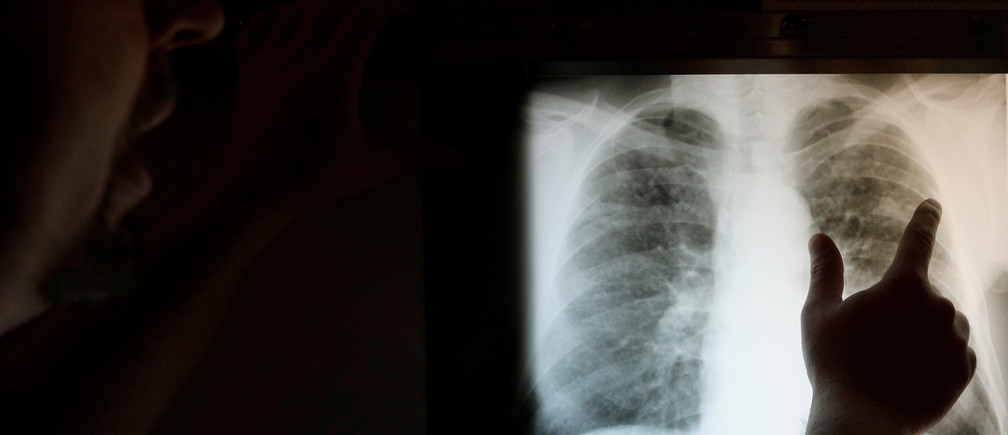4 ways data is improving healthcare

X-rays are one area being improved. Image: REUTERS/Brian Snyder
- 97% of all data produced by hospitals each year goes unused, but that's beginning to change
- From therapy to x-rays, progressive technology is keeping us healthier
Hospitals produce 50 petabytes of data per year. This mass of information comprises clinical notes, lab tests, medical images, sensor readings, genomics, and operational and financial data. At the moment, 97% goes unused – but this is changing, with great potential to transform the quality of medical care.
Here are four ways data analysis is improving healthcare without adding staff or beds.
1. Boosting the humble X-ray
The X-ray is the oldest form of medical imaging, and still the most commonly used. Chest X-rays alone represent 40% of the 3.6 billion imaging procedures performed worldwide every year. But X-ray “reject rates” – the number of images that cannot be used due to poor image quality or patient positioning – can approach 25%.
To address this, software engineers have developed an application that helps clinicians pinpoint the root causes of rejected images. The app was piloted at the University of Washington Medical Center, and has automated a process that once required 230 mouse clicks and nearly seven hours of work. Reducing reject rates saves time and resources while putting patients on the right path sooner.
2. Enabling collaboration
In oncology, the process of preparing for, conducting, and documenting tumor board meetings is frequently suboptimal and non-standardized. Each specialist aggregates data on a patient in a silo. As a result, meetings are spent switching back and forth between the different systems and technologies used across each discipline.
To address this, an alliance between Roche Diagnostics and GE Healthcare is combining and analyzing patients’ diagnostic data — including genomics, tissue pathology, and biomarkers — with their medical imaging and monitoring data. From here, cloud-based data integrating software could fundamentally change the process of tumor board meetings, helping doctors make more informed, faster diagnoses and individualize treatments to each patient.
3. Tailoring therapies
Integrating data can have transformative effects across the entire healthcare ecosystem. GE Healthcare recently began a partnership with Vanderbilt University Medical Center (VUMC), to enable safer, more-precise immunotherapies.
The project will retrospectively analyze and correlate the immunotherapy responses of thousands of cancer patients with their demographic, genomic, tumor, cellular, proteomic, and imaging data. From here, AI-powered apps will help physicians identify the most suitable treatment for each patient.
4. Organising hospitals
A small but growing number of hospitals are implementing NASA-style mission control Command Centers to manage their functions and services. The goal is to address the capacity, safety, quality, and wait-time issues that have plagued healthcare.
A hospital Command Center pulls in streams of data from various systems, generating analytics that help staff predict what will happen in the next 24 to 48 hours. The data is displayed on Command Center screens and on tablets and mobile devices. This allows staff to focus on delivering care, rather than organizing it.
Industry experts say that this type of digitization is just the beginning. DELOITTE’S CENTER FOR HEALTH SOLUTIONS report cites centralized digital centers as something the hospital of the future will need to function in a world of evolving technologies, demographic shifts, and economic changes.
The GLOBAL INNOVATION INDEX 2019 is the result of a collaboration between Cornell University, INSEAD, and the World Intellectual Property Organization (WIPO) as co-publishers, and their Knowledge Partners, Confederation of Indian Industry, Dassault Systèmes, SEBRAE, Brazilian Micro and Small Industry Support Services, and Brazilian Confederation of Industry.
Don't miss any update on this topic
Create a free account and access your personalized content collection with our latest publications and analyses.
License and Republishing
World Economic Forum articles may be republished in accordance with the Creative Commons Attribution-NonCommercial-NoDerivatives 4.0 International Public License, and in accordance with our Terms of Use.
The views expressed in this article are those of the author alone and not the World Economic Forum.
Stay up to date:
Biotechnology
Forum Stories newsletter
Bringing you weekly curated insights and analysis on the global issues that matter.
More on Health and Healthcare SystemsSee all
Mansoor Al Mansoori and Noura Al Ghaithi
November 14, 2025








